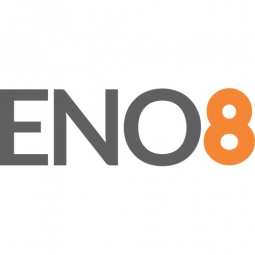下载PDF
Revolutionizing ER Experience with AI: A TeleMedCo Case Study

技术
- 分析与建模 - 机器学习
- 平台即服务 (PaaS) - 应用开发平台
适用行业
- 水泥
- 医疗保健和医院
适用功能
- 产品研发
用例
- 施工管理
- 语音识别
服务
- 系统集成
挑战
目前,医疗保健行业的成本非常高:医生和医院通常会吃掉急诊室诊断和治疗阶段产生的费用,这反过来又增加了患者的成本。因为去急诊室的人中有 50-80% 处于非危急状态,这意味着医生需要相应地优先治疗。 TeleMedCo 认识到这一市场效率低下,并试图通过技术解决方案来缓解这一人类问题。
考虑到开发这个想法的团队没有软件、硬件或人工智能专业知识,他们需要一个能够完全掌握用例、可视化实际运行过程、构思诊断解决方案并将其烘焙到用于销售和演示目的的工作原型。
客户
远程医疗公司
关于客户
TeleMedCo是一家医疗保健通信技术创新者,其灵感来自于改善社会如何照顾数百万人的机会。
解决方案
在公司寻求种子资金的过程中,ENO8 开发了一个能够使整个急诊室“胸痛方案”自动化的工作原型。这将是实时版本中的数十个此类协议之一,但原型更多地用作安全支持的概念证明。
胸痛方案从 iPad 应用程序和患者之间的语音用户界面开始。 ENO8 将该应用程序与 IBM 的 Watson 集成,并训练 AI 分析和识别胸部 X 光片和/或 EKG 中的特定情况,以便 iPad 应用程序可以将患者转移到非重症监护协议或自动与医生视频会议如果 Watson 在 X 射线或 EKG 中发现异常。
运营影响
相关案例.

Case Study
System 800xA at Indian Cement Plants
Chettinad Cement recognized that further efficiencies could be achieved in its cement manufacturing process. It looked to investing in comprehensive operational and control technologies to manage and derive productivity and energy efficiency gains from the assets on Line 2, their second plant in India.

Case Study
Hospital Inventory Management
The hospital supply chain team is responsible for ensuring that the right medical supplies are readily available to clinicians when and where needed, and to do so in the most efficient manner possible. However, many of the systems and processes in use at the cancer center for supply chain management were not best suited to support these goals. Barcoding technology, a commonly used method for inventory management of medical supplies, is labor intensive, time consuming, does not provide real-time visibility into inventory levels and can be prone to error. Consequently, the lack of accurate and real-time visibility into inventory levels across multiple supply rooms in multiple hospital facilities creates additional inefficiency in the system causing over-ordering, hoarding, and wasted supplies. Other sources of waste and cost were also identified as candidates for improvement. Existing systems and processes did not provide adequate security for high-cost inventory within the hospital, which was another driver of cost. A lack of visibility into expiration dates for supplies resulted in supplies being wasted due to past expiry dates. Storage of supplies was also a key consideration given the location of the cancer center’s facilities in a dense urban setting, where space is always at a premium. In order to address the challenges outlined above, the hospital sought a solution that would provide real-time inventory information with high levels of accuracy, reduce the level of manual effort required and enable data driven decision making to ensure that the right supplies were readily available to clinicians in the right location at the right time.

Case Study
Gas Pipeline Monitoring System for Hospitals
This system integrator focuses on providing centralized gas pipeline monitoring systems for hospitals. The service they provide makes it possible for hospitals to reduce both maintenance and labor costs. Since hospitals may not have an existing network suitable for this type of system, GPRS communication provides an easy and ready-to-use solution for remote, distributed monitoring systems System Requirements - GPRS communication - Seamless connection with SCADA software - Simple, front-end control capability - Expandable I/O channels - Combine AI, DI, and DO channels

Case Study
Driving Digital Transformations for Vitro Diagnostic Medical Devices
Diagnostic devices play a vital role in helping to improve healthcare delivery. In fact, an estimated 60 percent of the world’s medical decisions are made with support from in vitrodiagnostics (IVD) solutions, such as those provided by Roche Diagnostics, an industry leader. As the demand for medical diagnostic services grows rapidly in hospitals and clinics across China, so does the market for IVD solutions. In addition, the typically high cost of these diagnostic devices means that comprehensive post-sales services are needed. Wanteed to improve three portions of thr IVD:1. Remotely monitor and manage IVD devices as fixed assets.2. Optimizing device availability with predictive maintenance.3. Recommending the best IVD solution for a customer’s needs.

Case Study
HaemoCloud Global Blood Management System
1) Deliver a connected digital product system to protect and increase the differentiated value of Haemonetics blood and plasma solutions. 2) Improve patient outcomes by increasing the efficiency of blood supply flows. 3) Navigate and satisfy a complex web of global regulatory compliance requirements. 4) Reduce costly and labor-intensive maintenance procedures.






